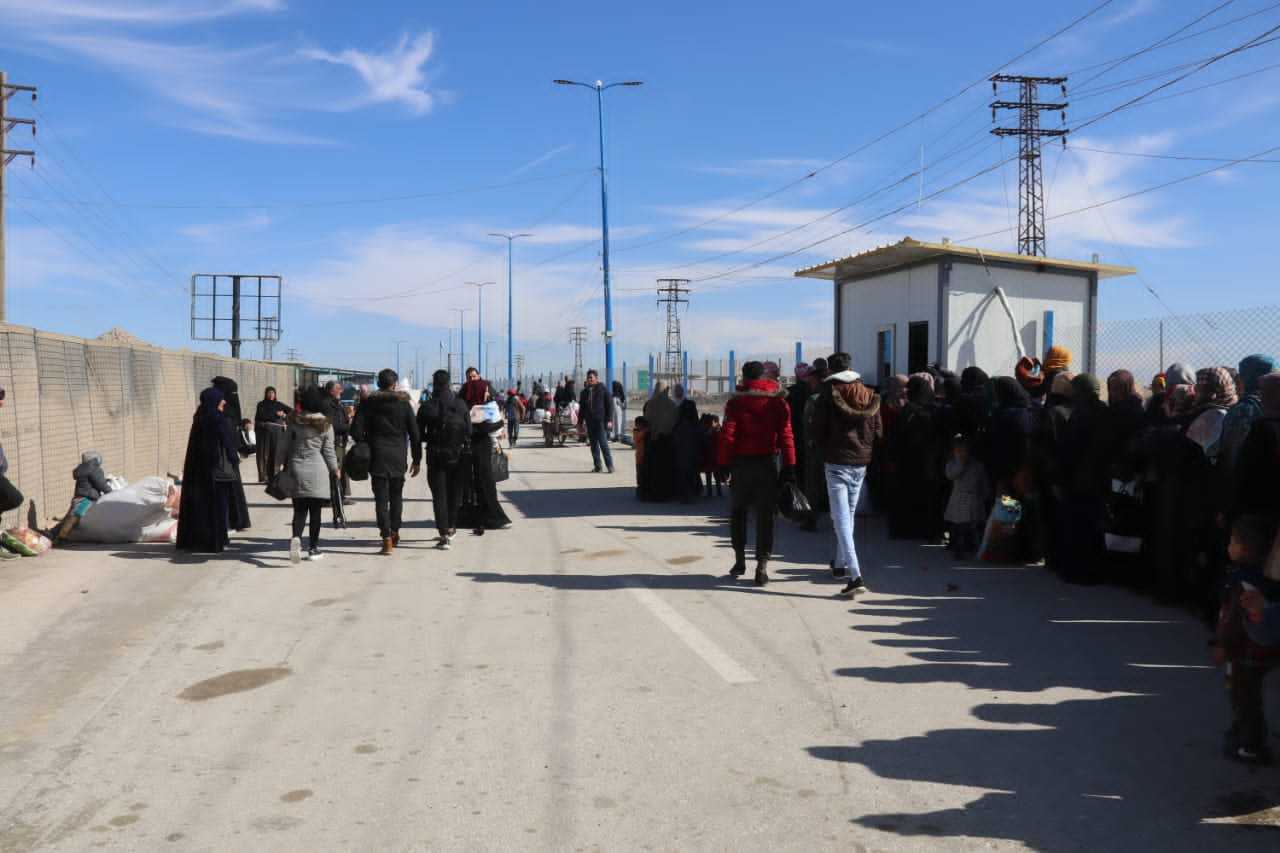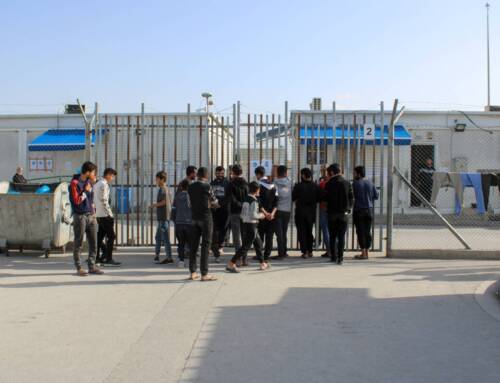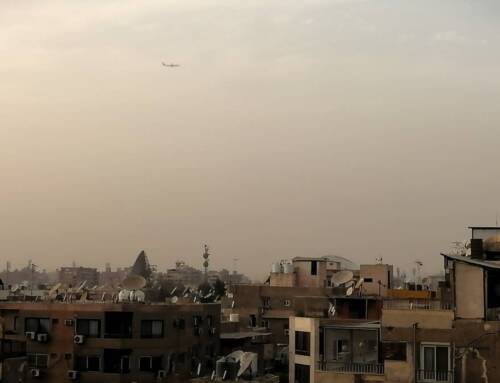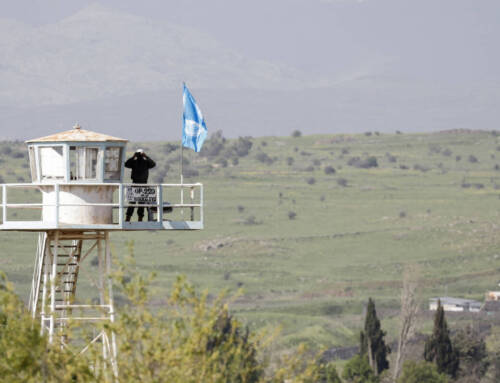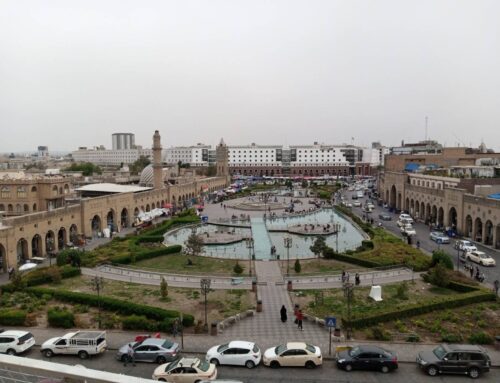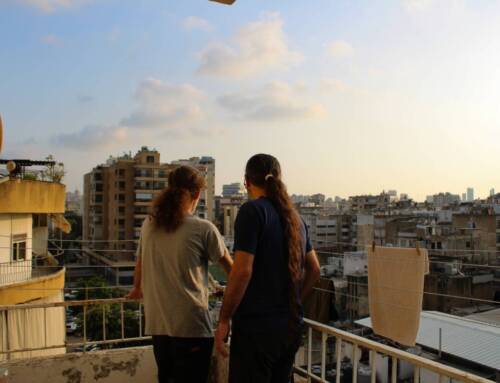A war of crossings between the regime and the SDF: Who loses?
In March and with no explanation, the Syrian regime closed four of the five crossings with the Kurdish-dominated AANES-administered areas, resulting in a spike in the prices of essential commodities in northeast Syria.
7 April 2021
AMMAN — On March 23, the Syrian regime closed four of the five crossings with the Kurdish-dominated Autonomous Administration in North and East Syria (AANES)-administered areas. However, trade between the two sides had effectively stopped on March 19 after the Syrian Democratic Forces (SDF), which maintain military control over most of northeast Syria, temporarily closed those crossings as part of security measures for the Norouz holiday celebrated by Kurds on March 21.
A source at the Tabqa crossing told Syria Direct that “the regime closed four crossings to commercial traffic and travelers, except for medical cases, such as cancer patients or those with critical illnesses, provided there is a medical report.” It also allows “the crossing of university students and employees at institutions under regime control.”
Exempted from the closure was the “al-Salihiyah crossing, designated solely for civilian foot traffic on specific days: Saturday, Monday and Wednesday,” according to the source, who asked not to be named since he is not authorized to speak to the media.
Five official crossings link the AANES areas with those controlled by the regime: al-Tayhah in Manbij in the eastern countryside of Aleppo; al-Bouassi and al-Hourah in Tabqa in the Raqqa province countryside; al-Akeirshi in southern Raqqa; and al-Salihiyah in Deir e-Zor. Two of these, al-Hourah and al-Tayha, are exclusively for trade and have customs areas “to collect duties on the goods coming from the regime-controlled areas for the benefit of both sides,” according to the same source. The three other crossings are humanitarian, designated for the movement of travelers via buses and on foot, with the exception of al-Salihiyah, which is for pedestrians only.
Reasons for the closure
The closure of crossings between the Assad regime areas and AANES areas overseen by the SDF coincided with a serious fuel crisis in regime-controlled regions. This crisis was exacerbated by the recent disruption of navigation in the Suez Canal that lasted for several days. The Ministry of Oil announced that it would “ration the distribution of the available quantities of petroleum derivatives” due to the impact of the pause on oil deliveries to Syria.
Although the crossing closures have not impacted the movement of oil tanks from the AANES areas to the regime areas, the closures have caused the prices of many materials in northeast Syria to go up, sources from the AANES areas told Syria Direct. This threatens the continued flow of oil to regime areas, contrary to the latter’s motivation for closing the crossings.
The reason for the closure, according to one former official in the Autonomous Administration’s Directorate of Economics in Tabqa, is “the regime’s attempt to put pressure on the SDF to increase the quantities of crude oil coming into its areas,” especially after the SDF stopped providing crude oil to Damascus-controlled areas between January and early March earlier this year.
But according to Ali Rahmoun, a member of the Presidential Council of the Syrian Democratic Council (SDC), the political arm of the SDF, the regime’s motive for closing the crossings goes beyond increasing oil imports. The closure, he told Syria Direct, was likely “a Russian-Turkish attempt to put pressure on the Autonomous Administration, especially since it came shortly after Russian forces withdrew from the vicinity of Ain Issa,” an area that is seeing a mutual military buildup by Turkish-backed Syrian opposition factions and the SDF.
Rahmoun also accused Turkey of “pressuring the Erbil government [in Iraq’s Kurdistan Region] to limit imports entering northeast Syria, underscoring the presence of coordination between Ankara and Moscow to impose a blockade on the AANES.” But the former official with the Directorate of Economics ruled out such a scenario since traffic continues through the two crossings of Aoun al-Dadat and Umm Jalloud, connecting SDF and Turkish-backed Syria opposition areas in Manbij.
On the other hand, Salman Barudo, the co-head of the Economic and Agricultural Council in the AANES, warned that by closing the crossings, the regime aims to “increase the rate of taxes and protection payments on goods entering the Autonomous Administration areas for the benefit of government forces running” those crossings.
Who does the blockade hurt?
Due to the regime’s crossing closures, the AANES areas have seen the price of food and medicine coming from Syrian regime areas increase due to their scarcity, impacting civilians.
Vegetables have been the most and fastest affected items. “The prices of some vegetables went up by 200%,” Ali al-Khalil (a pseudonym), the owner of a vegetable shop in the city of Raqqa, told Syria Direct.
“The prices of fruits and vegetables imported from Turkey through the Aoun al-Dadat crossing in Manbij have also increased because of the high demand given the scarcity of goods arriving from regime areas, in addition to traders’ exploitation,” Al-Khalil added. “The price of one kilogram of potatoes has gone up from SYP500 to SYP1,000.”
Farmer Uday al-Muhammad (a pseudonym), who lives in Raqqa province, expects that the price of vegetables will continue to rise until mid-April, which marks “the start of the harvest of locally grown vegetables,” he told Syria Direct.
Northeast Syria has also seen “an increase in the cost of medicine coming from the regime area, with some items increasing by 100%,” pharmacist Khalil al-Hamidi told Syria Direct from his residence in the city of Raqqa.
For example, the cost of a pack of anti-inflammatory Azithromycin, used to treat COVID-19, reached SYP3,000, double its pre-closure price. The price of a strip of 1,000mg Cetamol reached SYP800, up from SP400. Vitamin C went up from SYP500 to SYP1,000, according to al-Hamidi. He warned that “the continued closure of crossings and preventing the entry of medicine will have catastrophic results, especially given the spread of the Coronavirus pandemic and significant increase in the number of cases.”
Nonetheless, Rahmoun denied “any talks between the Autonomous Administration and Damascus regarding reopening the crossings,” with the AANES maintaining its commitment “to send the agreed-upon quantities of crude oil and wheat to regime areas so far.”
Rahmoun expected that “the crisis is temporary,” since the regime will have “to reopen [the crossings] after the failure to open crossings between it and the opposition factions-controlled areas in northwest Syria.” The impacts of the closure “will be more severe for the regime if it continues,” he said, “especially if the SDF responds to the crossing closures by preventing wheat and oil from leaving northeast Syria for regime areas.
“Northeast Syria is a major source of fuel and wheat for the regime in light of the economic blockade it suffers due to the imposition of the Caesar Act,” Rahmoun added. Additionally, “the regime used to make large sums of money from the crossings by imposing customs duties. By stopping them, it loses this income.”
This report was originally published in Arabic and translated into English by Mateo Nelson.

